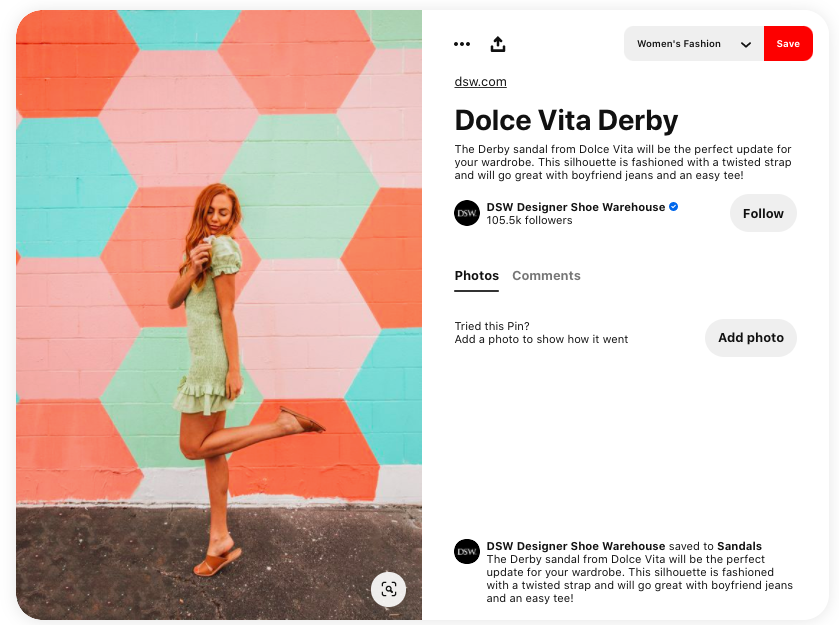The secret to an amazing paid media strategy

As the world continues to grapple with COVID-19, it’s becoming clear that brands can no longer ignore ecommerce as a channel. Consumers are staying at home and avoiding visiting brick-and-mortar stores, but they’re still spending — and planning to spend — online. In fact, ecommerce sales have jumped $52 billion since the start of the pandemic, and 66% of shoppers anticipate they will increase their online purchases during the 2020 holiday season.
In order to increase awareness online, get more clicks, and generate web traffic, brands need to build a strong paid media strategy. It’s an essential part of revenue growth for all businesses online, and if done well, it can have a big impact on boosting conversion rates.
What is paid media?
Paid media refers to external marketing efforts that involve a paid placement, including pay-per-click advertising, branded content, and display ads.
The best paid media campaigns include a hybrid of all of those things. Our recent survey revealed that 79% of people are influenced by other people, rather than ads when making purchase decisions. This means marketers need to rethink their paid media strategy and reallocate their dollars to invest in their communities rather than depend on any single platform, especially as we’re seeing trends like last month's Facebook boycott. Since consumers are persuaded more by real people than ads, brands need to add a human touch to their paid media and include influencer partnerships as part of their paid campaigns.
Here are 6 actionable paid media marketing best practices to incorporate into overall social media marketing strategy.
1. Work with creators to produce the most effective ads.
Consumers don’t want their online experiences interrupted by ads and other spammy messages — so much so that 40% of internet users utilize ad blocking software. So, how do you work around this obstacle?
Tap into your community to find creators who love your brand and produce amazing content. This can easily be done by building a partnership with influencers. Influencers are skilled one-man production teams, who are talented photographers, videographers, editors, and storytellers. They are capable of creating content that is much more captivating than what your internal team could have produced alone.
Not to mention, influencers have hundreds of thousands of followers who look to them for their advice and recommendations. The branded content they produce will look native to social media and resonate with their audience better than any polished studio-shot content.

2. Personalize your ads with influencer content.
We’ve preached for years that all brands should be repurposing influencer-generated content (IGC) across all marketing channels, including email, website, organic social, and of course, paid social. IGC is quick and cost-effective to produce, and repurposing it will only stretch the impact of your influencer marketing campaign.
Particularly on paid social, IGC frequently outperforms brand-directed content. In fact, brands like The Bouqs Co. use influencer-generated content for paid ads on Facebook and have garnered 2x as much engagement compared to brand directed content.

Not to mention, IGC is produced by a diverse group of individuals in many different places, showcasing the product in a variety of ways. This allows you to pick and choose which piece of content to use to personalize your paid ads and hyper target your audiences.
3. Use more video
In 2020, it’s more important than ever before to create video content on social media. Studies show that:
- 64% of consumers will make a purchase after watching branded video content on social media.
- 93% of brands have acquired a new customer through video digital advertising.
- Videos are consumers’ favorite type of content to see from a brand on social media.
While videos typically cost a pretty penny to produce, brands can expect to see substantial return on investment (ROI) as a result. You can work with your in-house creative team or hire an agency to produce a high-quality video, but the smartest way to create video content is by activating your community. Partner with a YouTube creator or TikTok influencer to create high-performing video content in a quick, cost-effective way. To extract even more value out of your partnership, repurpose the videos for ads across various social channels, just as you would with still images.
Check out how Curology worked with a few different YouTubers, then repurposed segments of their videos for its paid ads.

4. Include testimonials by using customer quotes in ads
Happy customers are your best advocates. So, take advantage of user-generated content (UGC) and use their own words to describe the best parts about your product and brand. As consumers, they have the ability to provide unique feedback from their personal experiences with your brand.
Whether you pull it from reviews or direct interactions with customers, their authentic love for your products will give your brand more credibility and provide social proof. Additionally, by featuring a direct quote from a customer in an ad, you’re allowing them to be part of the brand building process. Below, Furbo Dog Camera highlighted one customer’s amazing story about how its product saved their home.

5. Leverage Instagram Stories
As we become increasingly reliant on our smartphones, brands need to focus on creating an engaging mobile experience, even when it comes to paid media advertising. But don’t worry. With 500 million daily active users, Instagram Stories provides one of the best ways to captivate a mobile audience.
Instagram Story ads are unique, as the company has built interactive features on ads to enable brands to encourage participation and connect with their target audiences on a new level.
For instance, Instagram rolled out a feature last year that allows advertisers everywhere to add the interactive poll sticker to their Stories ads. According to the company, 9 out of 10 beta campaigns including the feature boosted the number of 3-second video views. Plus, brands like Dunkin’ saw a 20% lower cost per video view in its beta campaign, while Next Games drove 40% more app installs.

In addition, one of the best things about Instagram Stories for business accounts is the ability to tag and link. Add clickable hashtags and location tags to increase your reach. Instagram Stories get their own dedicated space at the top of a hashtag or location search result page, boosting visibility. Better yet, insert a “swipe up” link to drive more clicks and potentially increase sales.
6. Diversify your channels
While Facebook and Instagram offer an enormous amount of audience data and a wide array of tools for marketers, don’t forget about other effective channels. Consumers go to different platforms for varying reasons, so think about who you’re trying to reach and where they would most likely be. From there, make sure the content you promote as part of your paid media campaign looks native to the channel.
For instance, many young people utilize TikTok religiously, opening the app 8 times a day, with sessions averaging 4.9 minutes in length. This puts TikTok ahead of Facebook (4.7 minutes), Instagram (3.1 minutes), and Snapchat (1.6 minutes) in terms of usage. Needless to say, running a paid media campaign on this short-form video platform can increase impressions exponentially.
Brands like Morphe are already leveraging TikTok to build relationships and capture the attention of the elusive Gen Z demographic. Recently, the brand launched a paid campaign with the help of TikTok mega-stars Charli and Dixie D’Amelio, who have a combined 106 million followers. Within just a few days of launching, the videos posted by the D’Amelios were viewed over 51 million times.
Other brands use influencer content in their Pinterest ads to capture the attention of their target audience, redirect users to a specific product, and ultimately drive ecommerce sales. And since people come to Pinterest looking for products that will help them actualize their ideas, Pinners have higher purchase intent. In fact, research shows that 90% of weekly Pinners use Pinterest to make purchase decisions and 83% of weekly Pinners have made a purchase based on Pins they saw from brands.
Plus, Pinterest has tools like Pinterest Trends, which brands like DSW have leveraged to feature products that reflect the up-and-coming trends. As a result of its Pinterest campaign, the footwear retailer drove 45% higher engagement and 25% more clicks in selected Pins.

Invest in your community
Paid media is an essential part of every business’ ecommerce strategy. But brands need to think beyond traditional paid media advertising and invest in their community, whether that be by activating their influencer partnerships, boosting customer reviews, or seeking feedback from your audience. For your next paid media campaign, incorporate these six strategies to drive even more powerful results.